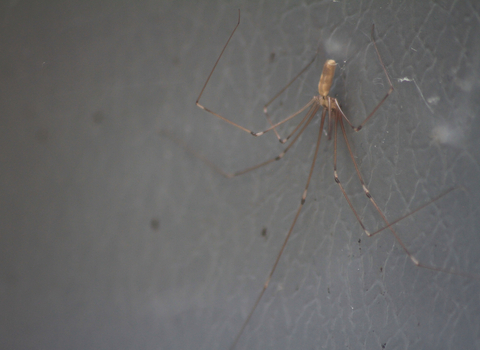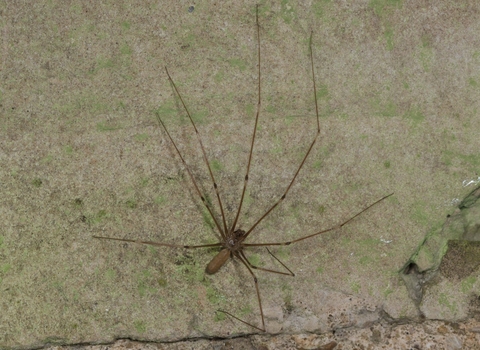
Cellar spider © Tom Hibbert

Cellar spider/daddy long-legs spider (Pholcus phalangioides) © Brian Eversham
Cellar spider
You've probably spotted this long-legged spider hiding in the corner of a house or building.
Scientific name
Pholcus phalangioidesWhen to see
All year round.Species information
About
The cellar spider, also known as the daddy long-legs spider, is almost only ever found indoors, where they benefit from a warm, stable temperature. Cellar spiders spin loose, messy webs in the corners of rooms, usually where the wall meets the ceiling. They feed on any insects they can find within a home, but will also hunt other spiders - including surprisingly large house spiders!Cellar spiders often hang upside down from their webs, but different spiders have different approaches to danger. If they're disturbed, some cellar spiders will bounce and vibrate rapidly in their web to try and frighten away the threat, whilst others will curl up and try to look as inconspicuous as possible.
They have very long legs but a tiny body, which is where the alternative name of daddy long-legs spider comes from. This often leads to confusion with craneflies and harvestmen, both of which are also sometimes known as daddy long-legs.
